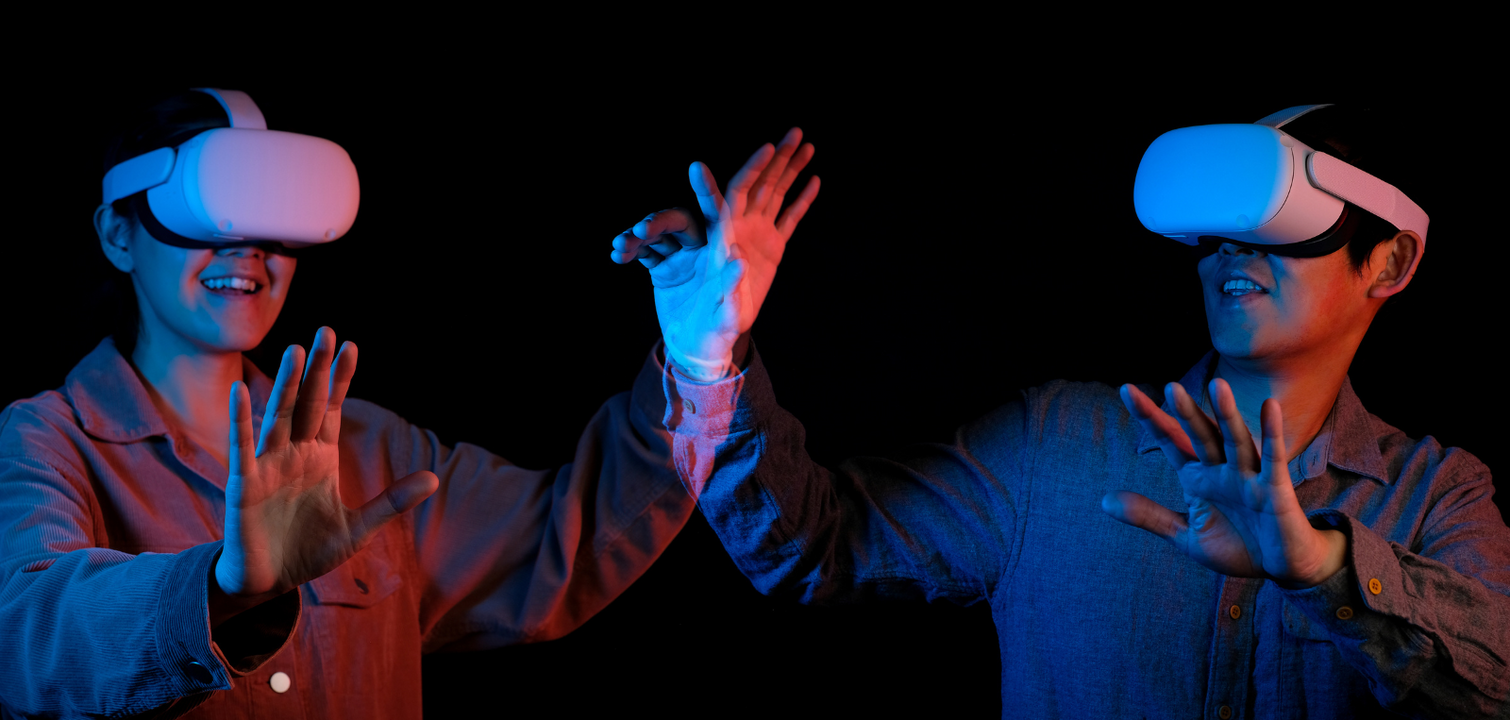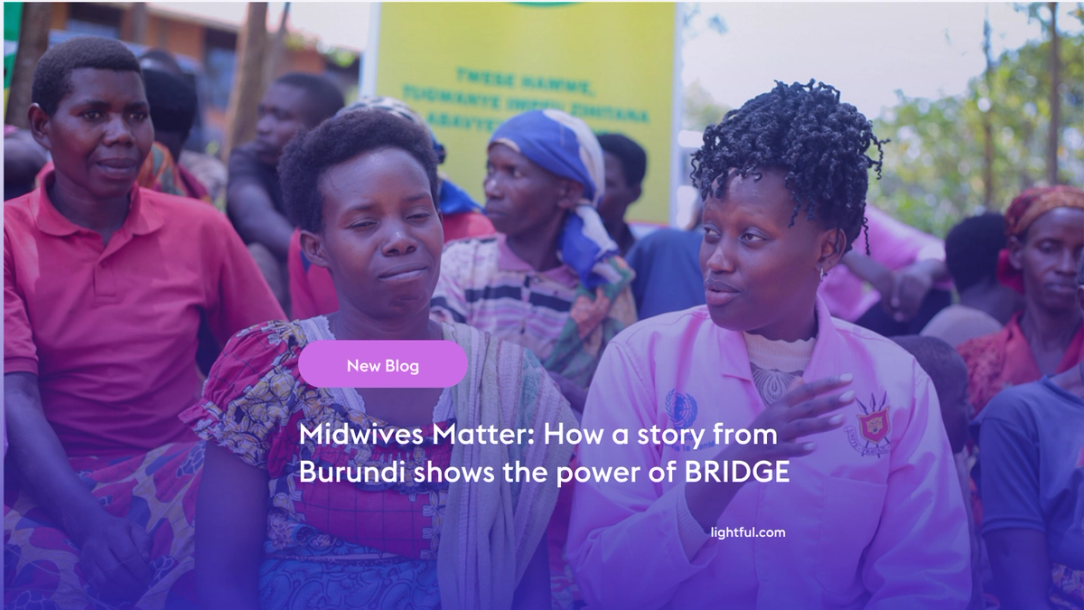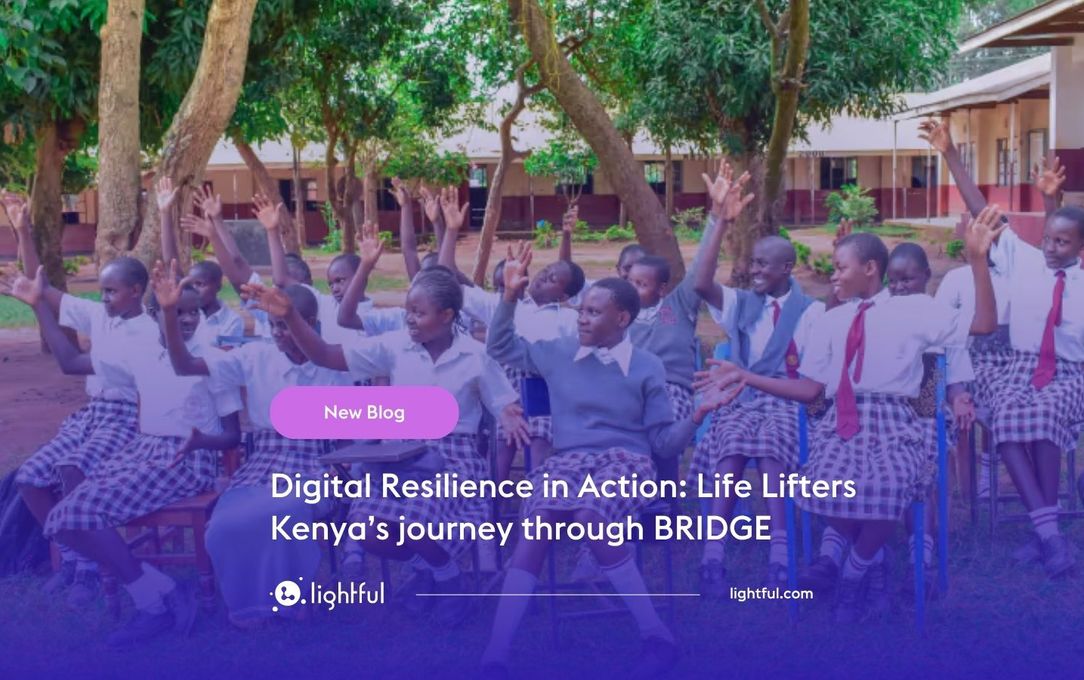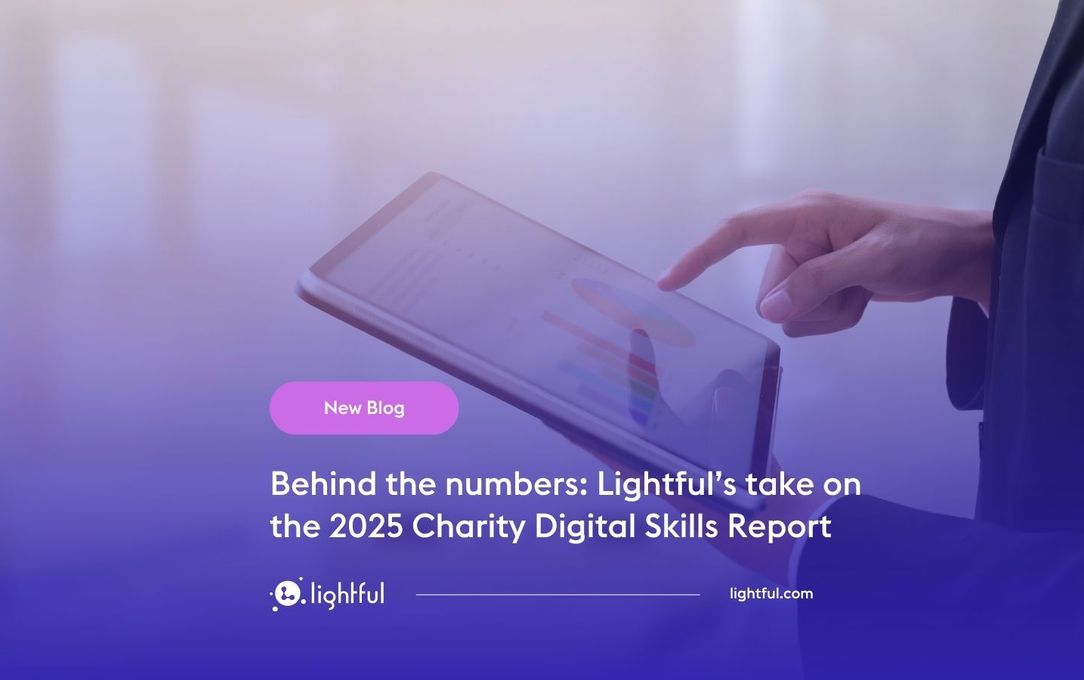An introduction to the metaverse for the nonprofit sector

We’ve been hearing a lot about the metaverse lately and nonprofits that we work with are wondering what the emerging technology means to them. It’s difficult to get your head around something so new and different so we wanted to try to dig into it to understand more.
We were lucky enough to talk to Riccardo Scotti di Uccio, Emerging Platforms Lead, at Meta, in an exclusive session for nonprofits participating in BRIDGE and some of our partners. He helped us to understand what the metaverse is so we wanted to help our readers explore the opportunities it can offer nonprofits, now and in the future.
First of all, what is the metaverse?
As of yet, there’s no industry definition for the metaverse, but it's generally described as a set of digital, interconnected, immersive experiences that will enable people to create and interact with others who are not in the same place as them.
By many, it is envisaged as the next phase of the internet. A 3D virtual world that facilitates multi-dimensional interactions through online experiences that rely on virtual reality technology (VR) and augmented reality (AR).
“Talking about the metaverse is like talking about the Internet,” says Riccardo.
It’s a virtual world where people interact, transact, play, create without having to move from their physical location.
The question is, how does this world apply to nonprofits in the future and where can they start today?
Our top 3 applications for nonprofits of the future
The metaverse is all about using emerging technologies to introduce people to new experiences with minimal friction. We know how important creating great experiences for donors and communities is, we have 3 top ways that nonprofits can benefit from the emerging technologies.
1. Enriched Communities
Online community building is already changing with more niche platforms and various forms of interaction showing up. From public groups to private forums and encrypted communities, everyone can feel empowered to build a community tailored to their needs. As we look into the future, online communities are expected to be less about the breadth of exposure and more about the depth of engagement they offer.
For nonprofits, that trend has already started with closed communities in Facebook Groups or Whatsapp groups where moderation allows participants to feel safe.
As we move into the metaverse, new technologies can make it easier for a community to connect without any physical barriers - wherever the individuals in the community are located. This can be particularly helpful for nonprofits supporting beneficiaries who are not able to be part of a physical community but still want to feel connected with others.
Digital identities will be an extension of ourselves allowing us to join virtual communities using platforms like Horizon Worlds to engage with businesses or causes we care about.
For nonprofits, augmented reality can offer new and creative opportunities for interactions with staff, volunteers, and supporters, while the use of a digital identity can make it easier to safeguard their communities.
2. Immersive Storytelling
Storytelling is a fundamental part of raising funds and awareness for causes online. Nonprofits are already experimenting with 360 stories and immersive experiences to engage with their audiences. These innovations in storytelling help get messages across to different types of people in new ways.
The content that people want to interact with online is also changing over time. Starting from text, we moved to pictures and videos and now we are about to explore immersive content with the use of AR and VR.
By using AR and VR in storytelling and digital campaigns, nonprofits have an opportunity to connect with their supporters in a new way that can bring them closer to the cause. It makes supporters feel part of the cause, which can make it easier to drive engagement and donations.
There are already some inspiring examples in the nonprofit space and there will definitely be more to come:
A Walk Through Dementia - Alzheimer’s Resarch UK
Alzheimer’s Research UK created the campaign ‘A walk through dementia’ to raise awareness of what it’s like living with dementia. They created a series of clips presented in virtual reality to give a 360º experience to viewers.
The immersive experience makes the story more powerful, and it’s also a great example of how nonprofits can be creative with their storytelling.
Too Much Information - UK National Autistic Society
The UK National Autistic Society used virtual reality to put people “in the shoes” of autistic children.
This video was viewed by more than 1.2 million people and the campaign ‘Too Much Information’ included several videos that raised awareness about autism.
Home After War - NowHere Media and GICDH
Home After War is a virtual reality experience produced by NowHere Media in partnership with the Geneva International Centre for Humanitarian Demining (GICHD) and it tells the real-life story of Ahmaied and his family returning to Fallujah in Iraq after being displaced from their home by war.
A 360º experience makes the story even more powerful, helps to elicit empathy, and it gives a great example of the power of storytelling combined with emerging technologies.
3. New routes to Fundraising
There is an ongoing need for nonprofit organisations to keep up with fundraising trends to ensure that they connect regularly with their donors, and don’t miss out on fundraising opportunities.
The use of virtual reality can be useful in engaging with existing and potential donors with the power of new technologies that bring the audience closer to the cause.
As the metaverse becomes part of our lives, there is an opportunity to use digital products as perks or virtual gifts as part of fundraising.
We are already seeing the use of VR in fundraising galas to tap into major donors with the use of cutting-edge technology. Pencils of Promise raised $1.9million in their gala by introducing virtual reality to create an experience that connects the donors with the change they can affect and how they can help children in Ghana.
This is another example of how powerful storytelling is at the heart of successful campaigns, whether they are for awareness or fundraising. Emerging technologies can offer new ways to tell stories.
“VR is an empathy machine, when used in the right way,” says Scott Harrison, founder of charity:water.
Charity:water was among the first charities to use VR in fundraising with a film that puts donors in the shoes of Selam, a 13-year old girl and her journey to access clean water in East Africa. The video had millions of views on digital channels and it attracted $2.4million donations in just the first night it was presented at their fundraising gala.
What makes the film so impactful is getting the audience to feel part of the story and then providing an easy way to find out more and donate through the donation page.
Top 3 actions nonprofits should take right now to be futureproofed
“The products of today are the bridges to the future” - Riccardo Scotti di Uccio
The best way for nonprofits to prepare for the metaverse and other emerging technologies is to ensure that they have laid the right foundations.
For many organisations, there is still quite some time and many barriers to overcome before they will be fully ready for immersive experiences. But there are still steps to take now that can help the organisation now, and ensure they are well prepared for the future.
The best way to get started is to leverage and maximise the online platforms of today to lay the foundations for the future.
How can you get the foundations right?
Here’s what our Learning team recommends:
Online communities: audit your audience
It’s essential for nonprofits to know their target audience and their followers on social media. The first step to getting the foundations right for an online community is to perform an audit of existing communities.
A digital audit is all about looking at audience insights from all digital platforms in use. This is an important step for nonprofits to learn more about their audience, the key demographics and the content that works best for them.
A better understanding of their online audience will allow them to create tailored content that really resonates with their followers - it is all about reaching the right people with the right message, at the right time. For any organisation about to use a new digital tool, it’s important to know who they want to target. This will allow them to confirm if the new tool is right for the audience they have in mind.
Content creation: experiment with video
At the moment, content is all about video. Video content typically gets more engagement, lasts longer in the digital ecosystem, performs better in social media algorithms, and it’s easy to repurpose it multiple times… win-win-win!
Whether nonprofits are going to experiment with augmented reality in the future or not, now is the time to incorporate regular video content into existing communication plans.
Fundraising: find the right giving tools
Nowadays fundraising without using digital channels means leaving money on the table that could be going to a good cause. Pre-COVID-19, nonprofit organisations were mainly reliant on in-person fundraising and donations but now online giving is an integral part of any organisation's strategy.
There are a variety of online giving tools out there, so it’s important for nonprofits to pick the right one for their organisation, and their audience.
Eventually, they can leverage platforms like the metaverse to take their virtual fundraising to new heights. For those who are still transitioning to a more online way of fundraising, the first step is to spend some time getting their organisation (and their supporters) adjusted to digital giving.
How nonprofits can feel more confident to become part of the metaverse
There are still a lot of questions about how the metaverse will evolve and what it means for nonprofits.
We’ve mapped out the key themes that came up during our Q&A session with Meta. We look forward to more discussions with platform providers and nonprofits on how we can work together to help nonprofits feel more confident about the use of emerging technologies.
Tech-literacy barriers and digital access
Not all organisations and individuals have access to the network capabilities or hardware needed to experiment with digital technologies.
There is still a disparity in the level of digital access across different countries or organisational sizes and this is an important issue to consider when talking about new technologies.
At Lightful, we work with hundreds of nonprofits all over the world with a desperate need for digital skills and support to keep up with the changing online trends and there will be the need for further training in the use of virtual and augmented technologies as the metaverse evolves.
There are lots of free and accessible courses from Meta for an organisation to get started. As emerging technologies become more mainstream, we expect the required technology to become more affordable for nonprofits.
Safety
Online safety is a big issue for society as a whole, and a particular consideration for nonprofits that want to ensure their communities are protected in the metaverse.
Whether it’s working with children, marginalised communities, or vulnerable audiences, the new virtual world needs to be safe so that people can feel confident in engaging.
Meta has dedicated a page on ‘responsible innovation’ and they will continue to share details about striking the balance between privacy and innovation. They are building emerging technologies in consultation with experts in civil rights, accessibility, human rights, and safety, as well as academic institutions, and governments to create a safe and inclusive environment.
Governance
Governance in the metaverse has sparked several conversations over the last few years and it’s still a challenge to address. The question, of course (as astutely put by one of the participants in the conversation) - if the metaverse is built by everyone, how is it governed? The World Economic Forum launched ‘Defining and Building the metaverse’ this year in an attempt to address the governance questions. The initiative is hoping to develop the principles for governing the metaverse to make it easier to explore the opportunities it brings.
These and many other topics are still under discussion and will be for some time to come. When it comes to nonprofits, the vital thing is getting the foundations right now. Then, as emerging technologies evolve and become the standard technologies they will be in a strong position to tap into their potential.
Did you find this article useful? Sign up for our newsletter and stay up-to-date with blogs, articles, and events in the nonprofit and philanthropy space.
Find out more about the metaverse and how Meta is part of it.
Latest articles

Over the past year, Lightful and the International Confederation of Midwives (ICM) have supported Midwives Associations across Africa, South Asia and the Eastern Mediterranean to build their digital confidence through our BRIDGE programme. These organisations were starting from very different places, but all shared the same goal: to use digital tools to strengthen their voice, raise their visibility and advocate for better outcomes for women and babies.

In today’s rapidly evolving digital landscape, the ability to engage online is a necessity. For nonprofits, especially those working in underserved regions or tackling complex social issues, digital tools can be the bridge between intention and impact. Whether it’s reaching new donors, advocating for policy change, or delivering services, digital capacity enables organisations to scale their mission and deepen their impact. Yet many grassroots organisations remain digitally under-resourced. That’s why Lightful created the BRIDGE programme - Building Resilience in Digital Growth and Engagement - to empower nonprofits with the skills, confidence, and strategies to thrive in the digital age and build lasting change.
Related posts

In today’s rapidly evolving digital landscape, the ability to engage online is a necessity. For nonprofits, especially those working in underserved regions or tackling complex social issues, digital tools can be the bridge between intention and impact. Whether it’s reaching new donors, advocating for policy change, or delivering services, digital capacity enables organisations to scale their mission and deepen their impact. Yet many grassroots organisations remain digitally under-resourced. That’s why Lightful created the BRIDGE programme - Building Resilience in Digital Growth and Engagement - to empower nonprofits with the skills, confidence, and strategies to thrive in the digital age and build lasting change.

Advancing digital maturity: what Lightful has learned from supporting 3,500 charities globally
See who we help
Contact us
Want to learn more?
Email Jonathan and start a conversation





